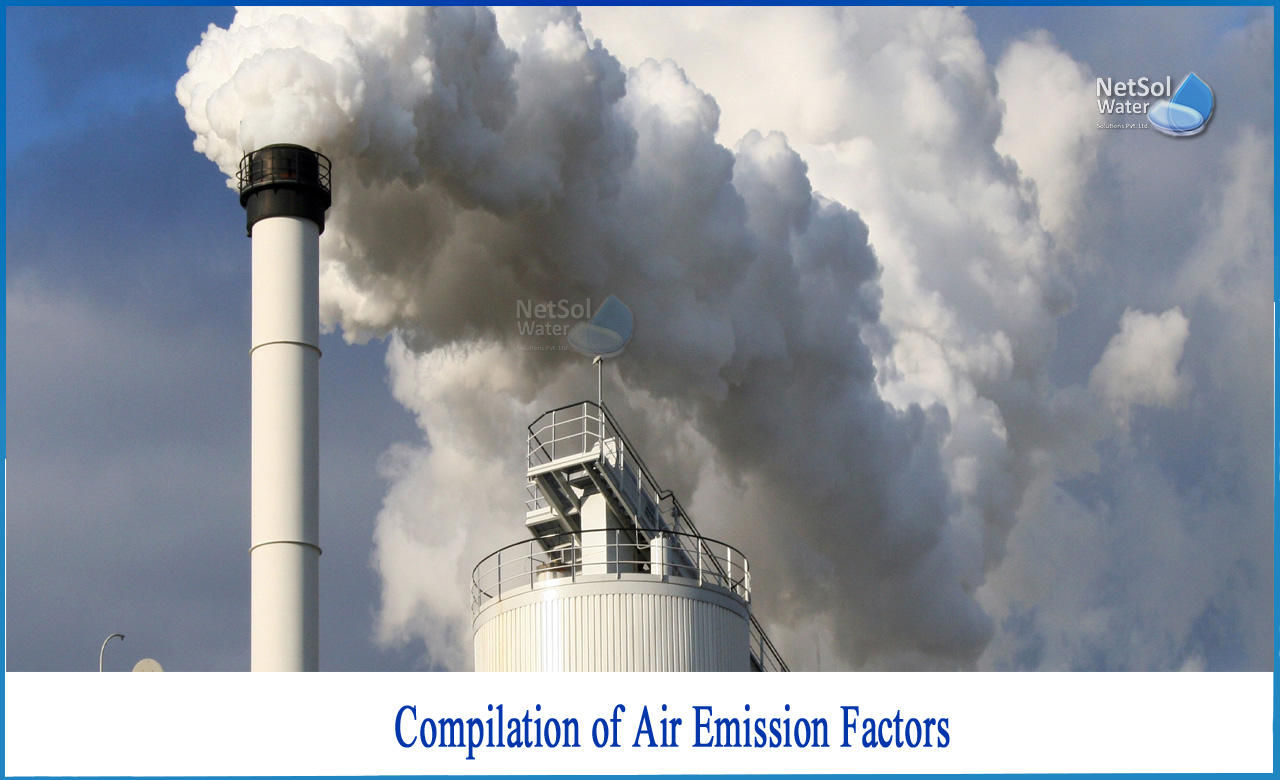What is Compilation of Air Emission Factors?
Emissions factors have long been the primary tool for developing national, regional, state, and local emission inventories for use in making air quality management decisions and developing emission control strategies. Emissions factors have recently been used by federal, state, local, and tribal agencies, consultants, and industry to determine site-specific applicability and emissions limitations in operating permits.
An emissions factor is a representative value that attempts to relate the amount of a pollutant released into the atmosphere to a pollutant-related activity. These variables are typically expressed as the pollutant's weight divided by a unit weight, the volume, distance, or duration of the polluting activity (e.g., kilograms of particulate emitted per megagram of coal burned). Such factors make estimating emissions from various sources of air pollution easier. Most of the time, these factors are simply averages of all acceptable quality data that are assumed to be representative of long-term averages for all facilities in the source category.
Emission Factor Applications
Emission factors can be used to estimate source-specific emissions for areawide inventories, among other things. These inventories serve a variety of functions, including modelling and analysis of ambient dispersion, development of control strategies, and screening sources for compliance investigations. Emission factor use may also be appropriate in some permitting applications, such as determining applicability and determining operating permit fees.
The EPA does not recommend using these factors as source-specific permit limits and/or compliance determinations for emission regulations. Because emission factors are essentially an average of a range of emission rates, roughly half of the subject sources will have emission rates greater than the factor and the other half will have emission rates less than the factor. As a result, a permit limit based on an emission factor would put half of the sources out of compliance.
Ratings of Emission Factors
Each emission factor is rated from A to E, with A being the best.
The ratings of a factor is a general indication of its dependability or robustness. This rating is based on the estimated reliability of the tests used to develop the factor, as well as the amount and representativeness of the data. In general, factors that are based on a large number of observations or on more widely accepted test procedures are given higher rankings. A factor based on a single questionable observation, or one extrapolated from another factor for a similar process, on the other hand, would almost certainly be rated much lower.
As a result, the following emission factor quality ratings are assigned:
A: Outstanding. The factor is created using A- and B-rated source test data from a large number of randomly selected facilities in the industry population. The population of the source category is sufficiently specific to reduce variability.
B: Better than average. A- or B-rated test data from a "reasonable number" of facilities is used to create this factor. Although no obvious bias exists, it is unclear whether the facilities tested represent a random sample of the industry. The source category population is sufficiently specific, as with an A rating, to minimize variability.
C: Average. Factor is calculated using A-, B-, and/or C-rated test data from a sufficient number of facilities. Although no obvious bias exists, it is unclear whether the facilities tested represent a random sample of the industry. The source category population, like the A rating, is sufficiently specific to minimize variability.
D: Less than average. The factor is calculated using A-, B-, and/or C-rated test data from a small number of facilities, and there is reason to believe that these facilities do not represent a representative sample of the industry. There may also be indications of variability within the source population.
E: Unsatisfactory. Factor is derived from C- and D-rated test data, and there is reason to believe that the facilities tested do not represent a representative sample of the industry. There may also be evidence of variation within the population of the source category.
Conclusion
As emission factors can affect almost every aspect of air pollution control and air quality management, such as operating permit fees, compliance assessments, and emission inventories, they are always made available for public review and comment prior to publication.
Netsol Water is Greater Noida-based leading water & wastewater treatment plant manufacturer. We are industry's most demanding company based on client review and work quality. We are known as best commercial RO plant manufacturers, industrial RO plant manufacturer, sewage treatment plant manufacturer, Water Softener Plant Manufacturers and effluent treatment plant manufacturers. Apart from this 24x7 customer support is our USP. Call on +91-9650608473, or write us at enquiry@netsolwater.com for any support, inquiry or product-purchase related query.



